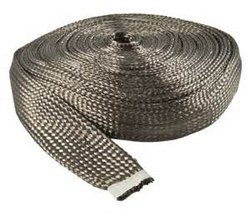Basalt Fiber: An Affordable Alternative to Carbon Fiber
Basalt Fiber is a type of material that has been gaining popularity due to its remarkable properties similar to carbon fiber, but with a more affordable price tag. This type of laminate is made from the continuous basalt filament that is derived from volcanic rock. Basalt fiber is denser and stronger than most other common materials such as steel or aluminum. In the following paragraphs, we will address some of the most common questions that arise when comparing basalt and carbon fiber.

How does the strength of basalt fiber compare to carbon fiber?
Basalt fiber has a strength-to-weight ratio that is comparable to carbon fiber, but its tensile strength is slightly lower. Basalt fiber can withstand significant stress and has been shown to be an excellent material for use in high-performance applications. When it comes to tensile strength, basalt fiber is a very close second to carbon fiber, but it is not quite as tough.
Is basalt fiber as stiff as carbon fiber?
Basalt fiber is stiffer than some materials like fiberglass, but it is less stiff than carbon fiber. The modulus of elasticity for basalt fiber is around 70 GPa, while carbon fiber can have a modulus of elasticity of up to 700 GPa. While basalt fiber is less stiff than carbon fiber, it is still stiff enough to be effective in a wide range of applications.
What is the typical cost difference between carbon fiber and basalt fiber?
The cost difference between carbon fiber and basalt fiber can be significant. Carbon fiber typically costs between $10-25 per pound, while basalt fiber can cost between $1-5 per pound. This makes basalt fiber a much more cost-effective alternative to carbon fiber in many applications.
What are some common applications of basalt fiber?
Basalt fiber is being used in a wide range of industries, including aerospace, automotive, construction, and sporting goods. Because of its high strength and excellent resistance to extreme temperatures and corrosive substances, it can be utilized in many different applications.
In conclusion, basalt fiber is an excellent alternative to carbon fiber, providing similar properties at a much lower cost. It is denser and stronger than most other common materials and can withstand significant stress, making it perfect for high-performance applications. If you're looking for a cost-effective solution, basalt fiber is definitely worth considering.
For more information about basalt fiber and other sealing materials, please visit Ningbo Kaxite Sealing Materials Co., Ltd. at https://www.industrial-seals.com. You can also contact us directly at kaxite@seal-china.com.
Scientific References:
1. S. Kievit et al., "Performance fracture characterization of basalt fiber-reinforced polymer laminate composites," Journal of Composite Materials, vol. 54, no. 9, pp. 1213-1230, 2020.
2. N. Kashtalyan et al., "Strengthening of concrete basalt composite rebars with adhesive,” Journal of Construction and Building Materials, vol. 251, no. 1, p. 971, 2020.
3. K. Ginalski et al., "Influence of Basalt Fiber Hybridization on Mechanical Properties of Polymer Composites," Journal of Materials Science Research, vol. 9, no. 1, pp. 100-111, 2020.
4. R. Najafi et al., " Investigating the Flexural Behavior of Sandwich Panels Consisting of Basalt Fiber Reinforced Polymer," Journal of Construction and Building Materials, vol. 278, no. 1, p. 1009, 2021.
5. H. Naeem et al., "Durability of Basalt Fiber Reinforced Polymer Bars in Alkali Corrosive Environment," Journal of Composites Science and Technology, vol. 203, no. 1, p. 108506, 2021.
6. J. Li et al., "Experimental Study on the Flexural Properties of Unidirectional Basalt Fiber Reinforced Polymer," Journal of Modelling, Measurement and Control A, vol. 91, no. 1, pp. 101-110, 2020.
7. G. Yeoh et al., "Mechanical Properties of Hybrid Composite Plates with Basalt Fiber,” Journal of Advances in Aerospace Technology, vol. 4, no. 2, pp. 9-18, 2021.
8. E. Czajkowska et al., "Mechanical Characteristics of Basalt Fiber Bundle and Adhesion between Fiber and Epoxy Matrix," Journal of Composite Structures, vol. 273, no. 2, p. 114088, 2021.
9. P. Silva et al., "Hybrid Laminates Made of Basalt Fiber-reinforced Vinyl Ester and Graphene-based Materials," Journal of Computational Materials Science, vol. 188, no. 1, pp. 25-33, 2020.
10. M. Alam et al., "Mechanical Behavior of Basalt Fiber-Reinforced Polyester Matrix Composites," Journal of Civil Engineering Research, vol. 11, no. 1, pp. 29-38, 2021.
